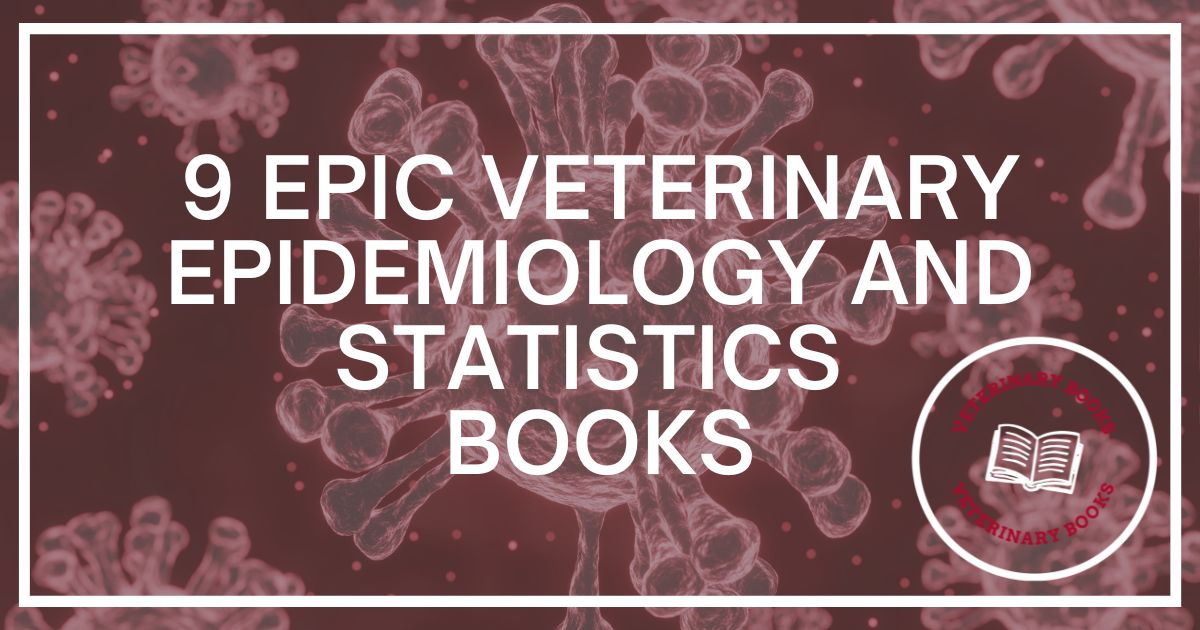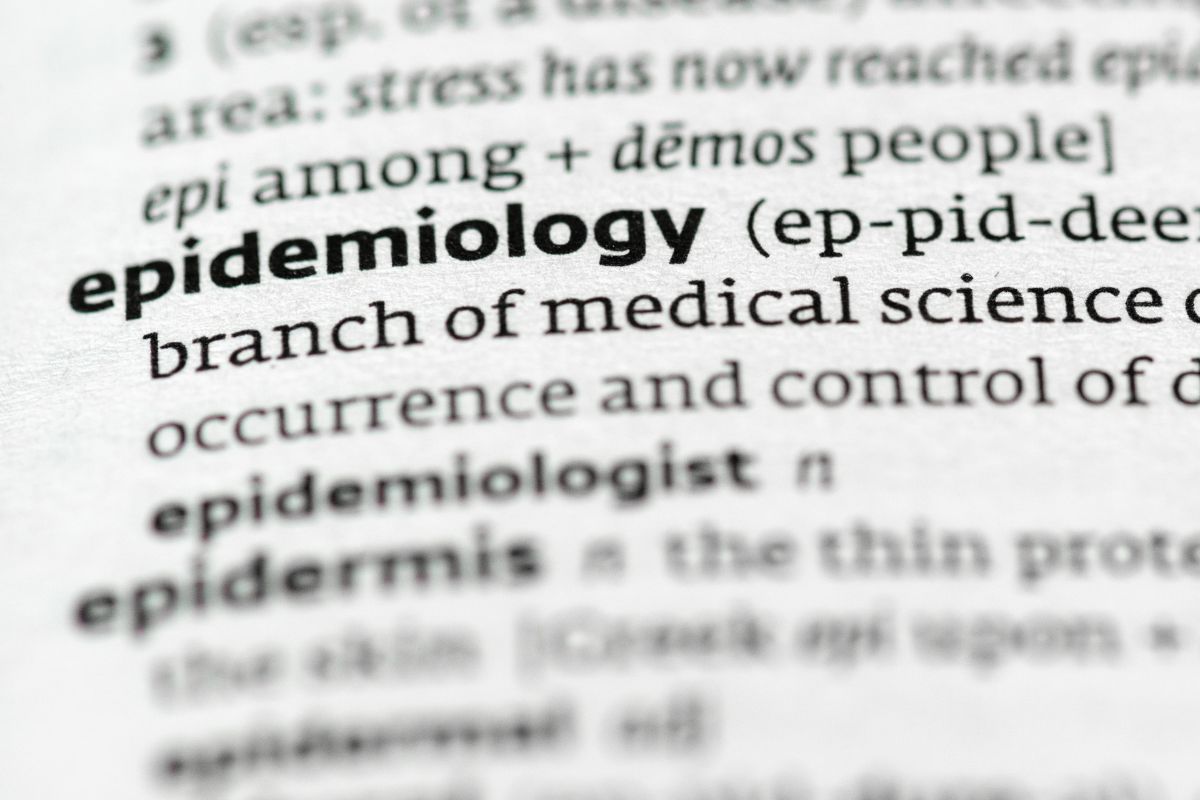Veterinary Epidemiology is the Study of…
Veterinary epidemiology, one of the disciplines that make up veterinary public health, is particularly concerned with disease surveillance, response, and prevention. You must gather and analyze data to create and test disease pattern-related hypotheses.
The ability to better comprehend hazards and how to prevent widespread sickness is now possible for veterinary epidemiologists. Given the significant overlap between human and animal health, veterinary epidemiology is a crucial discipline.
Principles of Epidemiology
Key terms in this definition reflect some of the critical principles of epidemiology.
Study
The foundation of the scientific field of epidemiology is sound scientific research. Data-driven epidemiology relies on a systematic, objective approach to data gathering, analysis, and interpretation.
To determine whether the observation, such as the number of disease cases in a specific location during a particular period or the frequency of exposure among people with the disease, differs from what you might expect, basic epidemiologic methods rely on careful observation and the use of valid comparison groups.
However, biostatistics, informatics, and the biological, economic, social, and behavioral sciences are all used in epidemiology and other scientific disciplines.
Animal epidemiology is frequently referred to as the foundation of public health, and for a good reason. First, epidemiology is a quantitative field requiring a basic understanding of statistics, probability, and reliable research techniques.
To explain health-related behaviors, states, and occurrences, epidemiology is a way of causal reasoning that relies on formulating and testing hypotheses based on scientific disciplines like biology, behavioral sciences, physics, and ergonomics.
Epidemiology is more than just a study activity; it is a crucial part of public health, serving as a guide for appropriate and practical public health action based on this science and causal inference.
Distribution
The frequency and pattern of health events in a population are of interest to epidemiology:
Frequency refers to the relationship between a population’s size and the number of health events that occur in a community, such as the number of cases of meningitis or diabetes.
Epidemiologists can compare disease occurrence in various populations using the resulting rate. The pattern is the frequency of health-related circumstances by person, place, and time.
Time patterns might be hourly, daily, weekly, monthly, annual, seasonal, workday versus weekend, or any other division of time that may affect the likelihood of contracting an illness or injuries.
Geographic variance, urban/rural distinctions, and the location of workplaces or schools are only a few examples of place patterns. Personal characteristics include demographics like age, sex, marital status, and socioeconomic level that may link to the risk of disease, injury, or disability, as well as behaviors and environmental exposures.
The activities of descriptive epidemiology, which appear in more detail later in this session, include describing health incidents by time, place, and person.
Determinants
Any element that causes a change in a health state or other defining characteristic, whether an event, a feature, or another definable item.
Additionally, epidemiology is essential in looking for determinants or factors that contribute to developing diseases and other health-related occurrences. Epidemiologists believe that sickness does not set in a community randomly but rather when an individual has the ideal confluence of risk factors or determinants.
Epidemiologists employ analytical epidemiology or epidemiologic investigations to explain the “Why” and “How” of such events to look for these factors. They examine whether groups with varying disease rates differ regarding their racial or ethnic composition, immunologic or genetic make-up, habits, environmental exposure, or other ‘possible risk factors.
The research findings should justify fast and efficient public health management and prevention actions.
Health-Related States or Events
Epidemiology was initially only concerned with epidemics but later broadened to include endemic infectious diseases and non-communicable disorders.
Additional epidemiologic techniques had been essential in the study of chronic illnesses, accidents, congenital disabilities, maternal-child health, occupational health, and environmental health by the middle of the 20th century.
Epidemiologists then started to focus on actions that affect health and well-being, like how much exercise a person gets and whether they wore a seat belt. With the recent growth in molecular techniques, epidemiologists may make significant advancements in studying genetic risk factors for disease.
Indeed, anything that impacts a population’s health may be a health-related state or occurrence. Despite this, many epidemiologists still refer to the various health-related conditions and circumstances investigated as “diseases.”
Specified Populations
Although epidemiologists and direct healthcare providers (clinicians) are interested in the occurrence and control of disease, their perspectives on “the patient” are very different. The clinician has more interest in an individual’s health; the epidemiologist’s interest is in the overall health of the people in a community or population.
In other words, the individual is the “patient” of the doctor, whereas the community is the “patient” of the epidemiologist. As a result, when dealing with an ill patient, the physician and the epidemiologist have separate roles.
For instance, when a patient with diarrheal sickness shows up, both parties aim to make the right diagnosis.
On the other hand, the epidemiologist focuses on determining the exposure or source that caused the illness. It also focuses on the number of people with similar exposure, the possibility of further spread in the community, and interventions to prevent other cases or recurrences. While the clinician typically focuses on treating and caring for the individual.
Application
Epidemiology entails applying the knowledge discovered via the studies to community-based practice and merely “the study of” health in a population. The profession of epidemiology is both a science and an art, much like the practice of medicine.
The clinician integrates medical knowledge with experience, clinical judgment, and patient understanding to diagnose correctly. He also recommends the best course of action for the patient. The epidemiologist similarly “diagnoses” the health of a community and suggests appropriate, workable.
Acceptable public health interventions to control and prevent disease in the community using the scientific methods of descriptive and analytic epidemiology as well as experience, epidemiologic judgment, and understanding of local conditions.
What Do Veterinary Epidemiologists Do?
A veterinary epidemiologist’s specific duties can vary greatly. Various government agencies employ many, but some teach the next generation of veterinarians and public health specialists at universities. Veterinary epidemiologists can work for the CDC, the National Park Service (NPS), the US Department of Agriculture (USDA), and other organizations.
Although veterinary epidemiologists frequently work to stop and restrict illness transmission, several responsibilities are involved. These veterinary specialists might perform the following tasks:
- Examining illness trends.
- Examining health epidemics.
- Evaluating vaccination effectiveness.
- Keeping track of antibiotic resistance.
- Public Education.
What may this look like? Think about a veterinary epidemiologist looking into an epidemic of a disease. To identify the source of the issue, they delve into the data and rely on their understanding of veterinary care.
After that, they started looking at ways to stop further breakouts. Another course of action is available depending on the condition and associated risk factors. As a result, perhaps new immunization guidelines or hygienic requirements will appear.
How Do You Become a Veterinary Epidemiologist?
Your undergraduate study is the first step to becoming a veterinary epidemiologist. Although doctor of veterinary medicine (DVM) programs don’t always need it, finishing a four-year undergraduate degree is a good idea.
You must complete many prerequisite classes before enrolling in vet school. The Association of American Veterinary Medical Colleges (AAVMC) states that most accepted students have bachelor’s degrees.
After earning your undergraduate degree and finishing any special requirements, you can apply to veterinary programs. You will study the basic sciences for the first three years of your education.
Exams, laboratories, and lectures will all be a part of this. As you approach your last year of school, you’ll gradually develop your practical abilities to prepare for clinical rotations. After finishing the program, you’ll receive your DVM.
Students in both undergraduate and graduate programs learn epidemiology. The subject is third-year Bachelor of Veterinary Medicine (BVM) students at the undergraduate level. During these formative stages, the idea of viewing diseases holistically is an emphasis.
The main topics covered include; fundamental epidemiological definitions and their uses and approaches, disease measures, patterns of disease occurrence, etiology of disease, modes and routes of disease transmission, disease control/prevention/eradication strategies, and significant considerations when planning. There are two units available at the postgraduate level.
The Faculty of Veterinary Medicine teaches students in all departments introductory epidemiology in the first unit and quantitative methods in epidemiology in the second unit.
The fundamentals of epidemiology, illness measurements, disease causation and simple connections, sample techniques, notions of confounding/interaction, screening and diagnostic testing, and different types of veterinary studies are among the major topics covered in the first unit.
The main issues in the second unit are biasing in observational studies, identifying and quantifying illness risk factors, causes of diseases, causal models, confounding, model-building procedures, repeat measures, and survival analysis.
To become a veterinarian, the next stage is to pass the North American Veterinary Licensing Examination (NAVLE) and fulfill state-specific requirements. To complete your knowledge foundation, you’ll also need to pursue some further schooling. A master’s degree in public health is a common supplementary relevant education that veterinary epidemiologists seek.
Although it is not necessary, many veterinary epidemiologists hold board certification. A few years of professional experience, diplomate status with the American College of Veterinary Preventive Medicine, and involvement in epidemiology teaching or research are prerequisites. You can take the certification exam if you’ve satisfied all the requirements.
What Qualities are Most Important for Veterinary Epidemiologists?
It should be obvious that anyone who wishes to become a veterinary epidemiologist must be a lifelong learner.
These experts are constantly researching various topics to find out how we can better safeguard humans and animals against sickness. Due to population increase and climate change, new hazards are continually developing, keeping veterinary epidemiologists on their toes.
Numerous characteristics emphasized by the US Bureau of Labor Statistics (BLS) for epidemiologists are also relevant for veterinary epidemiologists. These experts must possess critical thinking abilities, attention to detail, and instructional expertise.
Because veterinary epidemiologists may need to convey dangers and preventive measures to various persons, the ability to teach others is vital.
Where to Find Veterinary Epidemiology Jobs
You can find veterinary epidemiology jobs online on different social websites.
















Book Reviews
Wildlife Disease Ecology: Linking Theory to Data and Application (Ecological Reviews) 1st Edition, Kindle Edition
By Kenneth Wilson (Editor), Andy Fenton (Editor), Dan Tompkins (Editor) Format: Kindle Edition
About This Book
Animals and plants can contract infectious diseases, like people, threatening biodiversity. The foundational research described in this book has advanced our comprehension of the ecology and development of wildlife illnesses.
Each chapter introduces the host and disease. It also explains how the development and testing of significant epidemiological and evolutionary ideas have contributed to our overall understanding of the evolution and spread of wildlife diseases.
Included in the topics covered are: How can hosts and parasites co-evolve? What influences the rate at which a disease spreads throughout a population? How can parasites that are co-infected interact?
Why does parasite burden differ amongst hosts? What elements affect the virulence of the parasite and the host’s resistance? What role do parasites play in invading species’ ability to spread? How can you manage infectious illnesses in wildlife?
This book will give students unfamiliar with the subject a helpful introduction and provide academics, professionals, and policymakers working in the field with new perspectives.
Overall, this is a fascinating collection of studies that showcases why wildlife diseases are essential to study. It also shows how combining field observations, experiments, mathematical models, and the most recent in genomic and molecular research contributes to effective conservation and management efforts.”
The relevance of long-term field investigations, necessary for comprehending dynamic systems, is an emphasis throughout the collection. Advances in modeling, epidemiologic approaches, and genetics have been crucial in several situations discussed by contributors.
Studies can be experimental, observational, or mostly theoretical. Each contribution includes a wealth of references and skillful illustrations. Overall, this well-written book significantly contributes to studying wildlife diseases and will promote further long-term data gathering and analysis. And it inspires hope.
As demonstrated in the cases of wild and farmed salmon or bighorn sheep pneumonia, improvements in our understanding of the dynamics of wildlife diseases allow for improved planning of conservation and management initiatives.
As a result, it is unquestionably highly valuable for scientists and managers working in the ecology of wildlife diseases and for advanced undergraduate students or academic lecturers who want to increase their expertise. This book is a fascinating excursion into the world of wildlife diseases.
This book comes to fill an important niche in disease ecology. It synthesizes the state of knowledge about wildlife disease ecology while integrating theoretical models with a wide variety of empirical case studies.
Introduces viewers to significant case studies demonstrating how you can use theory and facts to comprehend the ecology of animal sickness—this passage alludes to the paperback version.
Book Details
Publisher: Cambridge University Press; 1st edition (November 14, 2019)
Publication date: November 14, 2019
Language: English
File size: 31,074 KB
Simultaneous device usage: Up to 4 simultaneous devices, per publisher limits
Text-to-speech: Enabled
Screen reader: Supported
Enhanced typesetting: Enabled
X-ray: Not enabled
Word wise: Not enabled
Print length: 656 pages
Basic & Clinical Biostatistics: Fifth Edition 5th Edition
By Susan White (Author)
About This Book
Mastering the art of statistical analysis and application is essential in medicine, medical research, and any other area relating to health. A Doody’s Essential Book for the Year 2022!
The knowledge necessary to develop an informed judgment about data applicable to clinical care is available to medical students, researchers, and practitioners via the course Basic and Clinical Biostatistics.
This fifth edition is up to date to provide a current, thorough introduction to biostatistics and epidemiology as used in clinical practice, research, and medicine. A special focus is on the design of studies and the interpretation of research findings.
The book includes a “Presenting Problems” section from studies published in the medical literature. Additionally, there are exercises at the end of each chapter, and the content reflects how researchers ask research questions. Each chapter includes a list of critical concepts that emphasize the main ideas presented. This aims to make learning easier.
Features
- Essential elements include a section on the results of surveys and a more in-depth discussion.
- Using techniques such as logistic regression, the Cox model, and other multivariate statistical approaches.
- Numerous examples highlight both statistical methodologies and design concerns.
- Coverage of data visualization is expanding, and it now includes material on visual perception.
- A discussion of software applications like Tableau, Qlik, and Microsoft Power BI.
- Calculations using sampling and power woven throughout a presentation of the statistical model.
Book Details
Publisher: McGraw Hill / Medical; 5th edition (October 4, 2019)
Language: English
Paperback: 368 pages
Statistics and Computers for Animal and Veterinary Sciences: Fundamentals and Applications
By Rakesh Goel (Author)
About This Book
This book caters to the needs of students majoring in Animal and Veterinary Science, Animal Biotechnology, and other subjects that are closely related to these.
This book will be a textbook for students majoring in Veterinary science and individuals interested in learning “What statistics is all about.” It requires at least a basic understanding of the language and fundamental ideas underlying the field of statistics.
Those readers who intend to pursue more advanced coursework in statistics, particularly the application of statistics in specialized areas, will find this book an excellent resource for developing the requisite basic knowledge.
The text complies with the new VCI syllabus, whose implementation was in 2016 and is one of the most important characteristics (MSVE-2016). Students at SAUs and ICAR institutes, as well as those preparing for JRF and SRF exams and other competitive tests, would find this book helpful.
This book’s chapters each feature an entire theory that is self-explanatory, as well as a good number of solved cases. The solved cases presentation for each category is in a manner that is both sophisticated and engaging to facilitate the users’ capacity to grasp the material.
The subject matter discussed is easy to comprehend for the students, and they should feel encouraged to find solutions to unresolved problems.
Book Details
Publisher: New India Publishing Agency- NIPA (August 20, 2017)
Language: English
Hardcover: 212 pages
Statistics for Veterinary and Animal Science 3rd Edition
By Aviva Petrie (Author), Paul Watson (Author)
About This Book
This book does a good job of doing this, making it a suitable text for anyone looking to learn about or conduct veterinary and animal science research.
Anyone who performs or interprets statistical data in a veterinary practice will find this a powerful read, packed with ideas given in a non-mathematical approach clean of jargon but relevant to any daily practice.
This book provides a helpful introduction to vital veterinary statistics tests. It gives readers pertinent information on proper tests, software, and data use. A website offers up-to-date information, and all the data is current.
It also appears likely that people looking for an introduction to statistics for students enrolled in veterinary medicine and animal sciences degree programs will favorably receive and approve of the third version of the book.
Statistics for Veterinary and Animal Science has a lot to offer students and researchers in other fields of the biological sciences, despite being primarily prepared with veterinary medicine students and professionals in mind.
Priced less expensively from other sellers who might not provide free Prime shipping. Conquer your apprehensions about statistical analysis with the help of this successful textbook that is clear.
The third edition of Statistics for Veterinary and Animal Science is an introductory text that makes no assumptions about prior statistical skills. It begins with a simple methodology and expands on it to include some of the more sophisticated methods now in use.
After reading this book, you can manage numerical data and evaluate veterinary and animal science publications. The emphasis is on comprehending the underlying ideas and correctly interpreting computer output rather than going through mathematical calculations because the text is in a non-mathematical style.
Important Features
- Flowcharts help you select the appropriate statistical analysis in various circumstances.
- For your benefit, many actual worked examples are present to help you understand the steps.
- To get you accustomed to standard computer output, two statistical software, SPSS, and Stata, are used to analyze data.
- You can practice using your software to fully grasp the ideas by downloading the data sets from the examples in the book as electronic files from the book’s companion website in ASCII, Excel, SPSS, Stata, and R Workspace formats.
- The more complicated or specialized themes are identifiable so that, if wanted, you can skip them without losing continuity.
A new chapter on reporting criteria specific to veterinary medicine is available for individuals looking to plan and conduct research using best practices.
A new chapter on the critical evaluation of randomized controlled trials and observational studies in the published literature is now available. Two publications are critically under evaluation using the provided template.
A new chapter introducing specialized subjects includes statistics in molecular and quantitative genetics, spatial statistics, veterinary monitoring, and ethical difficulties of animal research.
The book has additional activities and explanations. A crucial component of veterinary and animal research is executing statistical methods and interpreting the outcomes. This one is the only statistics book produced exclusively for veterinary and animal science students, researchers, and practitioners.
Book Details
Publisher: Wiley-Blackwell; 3rd edition (May 6, 2013)
Language: English
Paperback: 408 pages
Animal Husbandry Statistics and Computer Applications Kindle Edition
By R. Thiagarajan (Author) Format: Kindle Edition
About This Book
Students in their first year of the Bachelor of Veterinary Science program will find this book helpful. Course offered in veterinary universities located throughout the Indian subcontinent. The Veterinary Council of India recently revised the course outline for veterinary undergraduate students to create a more standardized educational experience for veterinary students.
Under these conditions, the first-semester course on Biostatistics and Computer Applications appears to be one of the more challenging classes for students whose grades are below average and whose grades are middle. No single book covering all of these subjects is currently accessible.
A student should read at least six to eight books written in English that are of a very good standard. Students who attended a school focused on studying vernacular languages might require a book written in straightforward English and covering the entirety of the curriculum.
This book covers topics such as the collection of data, the classification of those data, the analysis and interpretation of those data, measures of central tendency and measures of dispersion, probability, tests of significance such as the t-test and the F test, analysis of variance (ANOVA), the design of experiments, and probability distributions.
In the book’s second section, the authors discussed the fundamentals of computers, the components of computers, software, and computer languages, and the scope and limitations of each. This book is also helpful for postgraduate students of Animal Genetics and Breeding who are preparing for the National Eligibility Test (NET).
It is for the Agricultural Scientists Recruitment Board administers (ASRB), veterinary graduates pursuing competitive exams that state public service commissions issue, and biology/veterinary graduates preparing for the Union Public Service Commission.
Book Details
Publisher: Satish Serial Publishing House (June 30, 2014)
Publication date: June 30, 2014
Language: English
File size: 1,579 KB
Text-to-speech: Enabled
Screen reader: Supported
Enhanced typesetting: Enabled
X-ray: Not enabled
Word wise: Not enabled
Print length: 242 pages
Veterinary Epidemiology 4th Edition
By Michael Thrusfield (Author), Robert Christley
About This Book
A detailed introduction to the function of epidemiology in veterinary medicine. This revised and extended edition of Veterinary Epidemiology introduces readers to the discipline of veterinary epidemiology.
The second version also adds new chapters on observational research design, validity in epidemiological investigations, systematic reviews, and statistical modeling to give more advanced material.
This new edition presents a historical perspective on the development of veterinary medicine. It then examines the scope of epidemiology, with chapters addressing causality, disease occurrence, determinants, disease patterns, disease ecology, and much more.
Veterinary epidemiology, fourth edition:
- Features updates of all chapters to provide a current resource on the subject of veterinary epidemiology.
- Presents fresh chapters vital to the continuous progress of the field.
- Includes instances from companion animals, cattle, avian medicine, and aquatic animal diseases.
- Focuses on the ideas and concepts of epidemiology, surveillance, and diagnostic-test validation and performance.
- Includes access to a companion website with multiple-choice questions.
Veterinary Epidemiology is a valuable reference for general veterinary practitioners, government veterinarians, agricultural economists, and members of other disciplines interested in animal disease. It is also essential reading for epidemiology students at both the undergraduate and doctoral levels.
Book Details
Publisher: Wiley-Blackwell; 4th edition (April 30, 2018)
Language: English
Paperback: 896 pages
Veterinary Clinical Epidemiology: From Patient to Population 4th Edition
By Ronald D. Smith (Author)
About This Book
Ideal for veterinary students, residents, and clinicians. The fourth edition of this bestselling textbook has been up to date in line with changes in research and teaching. The logical chapter progression represents the steps in a clinical case work-up and how epidemiological concepts and procedures assist.
This new edition gives principles for improving patient and population health outcomes. This includes recognizing new diseases through a systematic review of patient encounters and electronic medical records, integrating innovative approaches and concepts borrowed from the latest veterinary practice literature.
It also provides information on updating chapter content with enhanced coverage of risk, statistical and economic analysis, and surveillance for emerging diseases.
More than 60 instances of clinical research collected from the international veterinary practice literature given as structured abstracts; follow-up questions enable the reader to engage in the interpretation of results. Internet links to full-text versions of more than half of structured abstracts and more than 40% of the book’s 174 literature citations.
Update the listing and examination of public and private online resources, including standards for online literature searching and critical evaluation of clinical findings.
Today’s veterinary curricula emphasize experiential/problem-based learning vs. discipline-oriented training. This fourth edition is particularly suited to introduce epidemiologic concepts and methodology to veterinary students in the context of the patient encounter. It should be of value at any stage in the veterinary curriculum.
Book Details
Publisher: CRC Press; 4th edition (October 29, 2019)
Language: English
Paperback: 272 pages
Introduction to Veterinary Epidemiology
By Hans Houe (Editor), Annette Kjar Ersboll (Editor), Nils Toft (Editor)
About This Book
Undergraduate and graduate students can learn the fundamentals of veterinary epidemiology in Introduction to Veterinary Epidemiology. The book’s overview outlines the necessary procedures for organizing, carrying out, and deriving conclusions from an epidemiological investigation.
The method begins with the ideas and hypotheses that veterinary epidemiology is around. It also provides a strong introduction to data regarding its nature, management, and analysis. The examples used to illustrate the various components of the data analysis are SAS code and R code in the appendices to assist with getting started on the data analysis.
Authors co-wrote this book with strong computer science, mathematics, statistics, and veterinary medicine backgrounds. They have decades of experience in undergraduate, graduate, and postgraduate teaching. Leading veterinary epidemiologists from around the world have examined each chapter.
Book Details
Publisher: Biofolia (September 20, 2004)
Language: English
Paperback: 398 pages
Dictionary of Veterinary Epidemiology 1st Edition
By Bernard Toma (Editor), Jean-Pierre Vaillancourt (Editor), Barbara Dufour (Editor), Marc Eloit (Editor), François Moutou (Editor), William Marsh (Editor), Jean-Jacques Bénet (Editor), Moez Sanaa (Editor), & 3 more
About This Book
This book is an enlarged translation of the only veterinary epidemiology dictionary in the world, Glossaire d’epidemiologie animale. It is a complete, alphabetized lexicon of words used in veterinary epidemiology.
The book will improve communication on the challenges of the new animal-based industries and increased markets for animal products. It is a vital reference and teaching tool for anybody interested in animal health issues.
Due to the importance of economics and biostatistics as fields that are closely related to epidemiology and animal health, the editors have broadened the scope of the book beyond strictly epidemiologic terms. The dictionary should be beneficial as population-based problem-solving becomes a worldwide issue because of its global viewpoint.
This dictionary is an enhanced translation of Editions du Point Veterinaire’s Glossaire d’epidemiologie animale, the only veterinary epidemiology dictionary in existence.
A far wider range of vocabulary is in the Dictionary of Veterinary Epidemiology, which is also heavily illustrated with new pictures and tables. This book offers a thorough A-to-Z glossary of words related to veterinary epidemiology.
This book will be an invaluable tool for veterinary epidemiologists, animal scientists, government workers involved in animal regulation worldwide, and students and practitioners of veterinary medicine.
Book Details
Publisher: Wiley-Blackwell; 1st edition (May 15, 1999)
Language: English
Paperback: 284 pages
How Much is a Veterinary Epidemiologist’s Salary?
The average annual salary for a Veterinary Epidemiology in the United States is around $67,828 as of October 3, 2022. Suppose you need a quick pay estimator; that comes to about $32.61 per hour. This amounts to approximately $5,652 each month or around $1,304 per week.
Recap
Even if a passion for animals can be the foundation for a successful career in veterinary epidemiology, there is undoubtedly a great deal more to it. You need to have the same level of enthusiasm for the well-being of people.
In addition, you must have the mental fortitude to welcome difficulties and persevere through ambiguity. Those with an insatiable thirst for knowledge will find it an extremely interesting field.
If you have ever considered working in the field of veterinary epidemiology, now is probably a good time to start planning your next steps. Getting a doctorate in veterinary medicine is an essential component of the process. However, before obtaining your degree, you must apply to veterinary school and receive acceptance into the program.
You might need to finish some undergraduate coursework, get some veterinary work experience, or take the Graduate Record Examination, depending on where you are in your journey.















